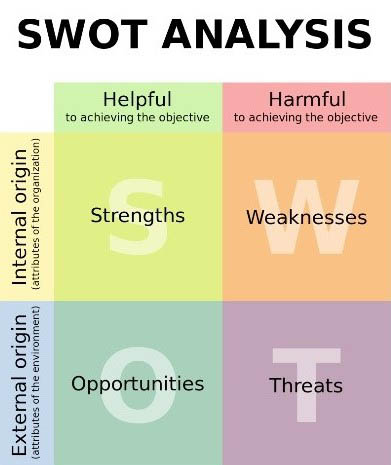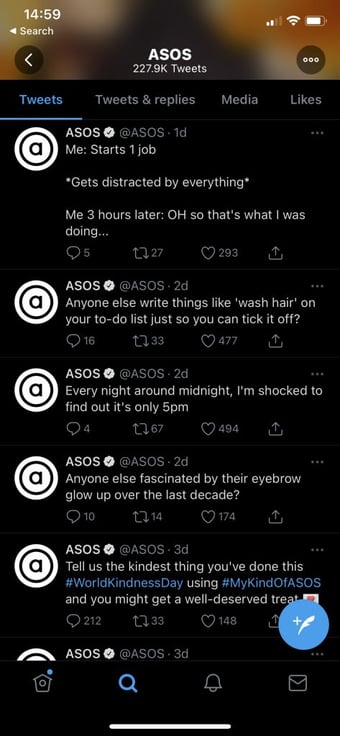Without a clear plan in mind, it’s hard to justify the true purpose of what you’re doing. Wow, that’s deep. This mantra (if you will) can be applied to any and all of your marketing activities. Social media shouldn’t be treated as an afterthought when putting together a digital strategy.
Your social media strategy should be part of the early stages to help bring together your overarching marketing and business goals.
We are fanatical about strategy. But what does an effective strategy entail? And, how do you go about creating one that works for you and your brand. Let’s look at this in two steps.
Part one: It’s all about the research
What are your social media goals?
Before you begin with anything, it’s crucial to identify what you want to achieve. Are you looking to build brand awareness? Perhaps drive consideration of your product or services. Or maybe you’re looking to focus on engaging with your community.
Regardless, social media goals should focus on so much more than simply selling. If sales are your only goal, let me tell you now: you’re going nowhere fast! Sure, ultimately you want to convert your social media followers into customers. But there is a lot of groundwork to be done first. You need to build credibility.
What’s your brands personality?
Your brands identity is more than just its look. It is creating a personality through tone of voice, your content and how you engage with others. But your approach on social media is unique compared to corporate guidelines.
While your brand identity is fairly rigid on things like colors, logos and styling, personality must have a degree of flex. It’s important to remember personality is altered for platform. A bit like us, it depends who you’re talking to and where.
…and does that personality translate to social media?
So it’s no surprise that your brand personality will change for social media. Even down to which channels you’re using. Take a look at e-commerce giant, ASOS. They are players in just about every social media channel there is.
Let’s have a look:
LinkedIn: focus on the corporate side of things, which is no surprise, sharing content and links to articles or events

.png?width=393&name=Screenshot-2020-11-16-at-14.54.06%20(1).png)
Facebook: mostly focuses on memes and sharing ideas


Instagram - a combination of user generated content, product editorial and memes


Twitter - relatable posts, with a separate account to deal with customer service inquiries
Who are you trying to reach?
(clue: it's all about personas)
Your intended audience and your actual audience can be entirely different. If you are already using social media, an analysis of your followers across your active channels will begin to paint a picture of who you are reaching.
If it’s not what you expected, examine what you’ve been doing, your customer base and of course, your personas. If you’re unable to reach your ideal customers, something isn’t working. Whether it’s your approach to your social media, the channels you’re using or if you’ve exhausted all the possibilities, you might want to consider if your branding is due a refresh.
Carry out a SWOT analysis of your competitors
Once you’ve established your goals, your personality and the audience you want to reach, it’s time to have a look at your competitors. Gather a list of up to five brands that you compete with and examine what they’re doing on social media, the channels they use, what’s working and what’s not.

Additionally, look for opportunities where you can provide your audience something different and valuable. Is there something your competitors aren’t doing? Or perhaps you can see what they’re trying to do, but you can do better.
Part two: Your social media plan
So, you’ve done your research on your goals, personality and competitors. It’s time to start planning your strategy. Something to keep in mind, regardless of whether you’re new to social media or refreshing your approach, is making sure you can maintain what you’re doing. It’s no good to decide to have a presence across all the platforms if you’re not going to nurture them all. There’s absolutely no shame in a back to basics approach.
Identifying the right social media channels
There are endless social media channels available, with even more launching regularly. We tend to focus on the core favorites: Facebook, LinkedIn, Twitter and Instagram.
This comes in two tiers: the first is reviewing which channels will be best at helping you achieve your strategic goals. For instance, consider the advertising opportunities as well as the organic audience on each.
Next, which channels do your target audience use? Think about demographic data here. Review your personas and see what matches best with them.
How often should you post content?
The age old question. A lot of factors play into how often you should post on social media. Each of the algorithms work differently for one. In fact, posting too often without ‘enough’ engagement can actually hinder your visibility on Facebook in particular. That said, a lot of it is trial and error, much like the time of day, and days of the week you post.
In reality, there is no magic formula for deciding how often to post on social media. That's because what works for one brand, doesn't work for another. Sure you can read case studies of what has worked for others, but don't make their solution your solution.
So, instead of seeking magic formulas, let's focus on these proven posting strategies:
- Posting consistency is more important than posting frequency.
- Content quality is more important than content quantity (and social media networks are letting us know with all the changes).
- Without having an objective for social media, you won't know if your posts are successful or not.
What are your content pillars?
Once you’ve established all of the above, it’s time to start thinking about your content. You may already have a content marketing strategy in place, in which case, you’ll be following that to an extent. If not, here’s how to choose your content pillars.
Identify your service clusters
Of course you know what you sell, but have you identified the product/service clusters? There are likely to be areas that fit into groups. For example, our clusters are: web, digital and creative.Once you’ve identified these, it’s time to work through your website.
And essentially tag the pages that are most relevant to each.
Planning your social media content and format
The one of the final steps is to think about how you’ll translate your website content into social media content. Keep in mind different lengths of posts serve each channel accordingly. For example, Twitter is famous for its short character limit on posts, whereas Facebook seems limitless in comparison. Sprout Social has a great guide to character limits and the ideal lengths of posts here.
Make sure you have suitable imagery for your posts, as visuals are essential for social media. If you don’t have a lot of owned images, consider stock imagery from places like Unsplash, iStock and other well known websites. You can also develop a user generated content strategy.
If you’re thinking about expanding your library of owned visuals (illustrations, video, animation, photography etc), working with a creative agency is a great option. Harnessing the creativity of a team who works on these kinds of projects day in, day out, can be refreshing and even cost effective, especially in these times.
Creating a social media content calendar
Finally, it’s time to start planning ahead! You can create a content calendar for the next quarter, six months or even the year. Remember, there’s always room for flexibility with digital marketing - that’s the beauty of it!
A content calendar is a great way to help you forward plan what you’ll be sharing ahead of time. Giving you and your cross functional teams notice to prepare what’s required: blogs, visuals, campaigns and so on.
Analyze, learn, adapt!
Ok, we dropped the ball on the content calendar being the ‘final’ step. It’s actually all about reporting. Analyze your social media content, learn from what’s working and what’s not and adapt your plans accordingly.
Keeping things simple, we recommend monitoring your reach, growth, engagement and website traffic from social media.
Need a helping hand?
No shame. We’re always happy to help with your digital marketing projects. Whether you are starting from scratch, refreshing or redesigning your strategy, we’re very much here. Leave your details below and we will be in touch.



